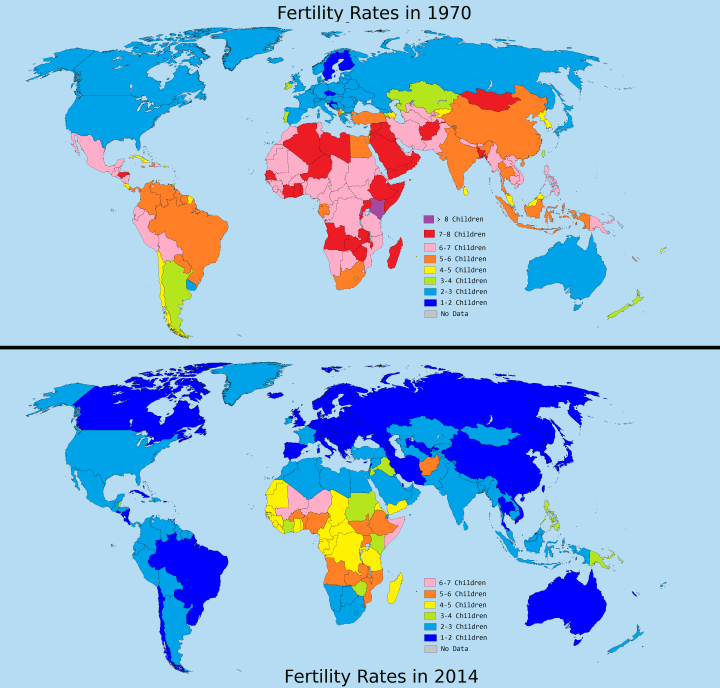‘Silver tsunami’ threatens to wipe out South Korean rural communities
GUNWI, SOUTH KOREA – It’s lunch break at Seoksan Elementary School and the entire student body has taken to the vast playground for a game of football — with just three players on each side.
“We don’t really have enough people and there’s no goalkeeper, but it’s still fun,” said Lee Jung-bin, playing on the same side as his sole fourth grade classmate, Kim Dong-won.
Lee is one of only six students — all boys aged seven to 11 — attending the school in the southern South Korean rural county of Gunwi, which once boasted 700 pupils.
Seoksan is one of many “mini-schools” struggling to stay open in rural communities that have been decimated by a dramatic demographic shift in South Korea, which now has one of the world’s lowest birth rates.
Birth Rate
| Country | 2000 | 2001 | 2002 | 2003 | 2004 | 2005 | 2006 | 2007 | 2008 | 2009 | 2010 | 2011 | 2012 | 2013 | 2014 |
|---|---|---|---|---|---|---|---|---|---|---|---|---|---|---|---|
| South Korea | 1.72 | 1.72 | 1.72 | 1.56 | 1.56 | 1.26 | 1.27 | 1.28 | 1.2 | 1.21 | 1.22 | 1.23 | 1.23 | 1.24 | 1.25 |
By 2030, a quarter of all South Koreans will be over 65 years old, and the overall population is expected to peak at around 52 million the same year before entering a period of steady decline.
This so-called “silver tsunami” poses a major challenge for Asia’s fourth-largest economy as the young, working-age population declines and the cost of caring for the elderly escalates.
South Korea has a fertility rate of 1.19 births per woman — the lowest among OECD member nations.
The central government has launched similar schemes across the country, pumping more than 80 trillion won ($68.3 billion) since 2006 into programs aimed at encouraging people to marry young and have larger families, according to health ministry data.
But critics say such schemes ignore the root causes of the problem, including a lack of quality jobs, childcare facilities and support for working mothers.
DYI Comments: If anyone believes that the world will be over populated have not kept up with the worlds declining birth rate since 1970. The world birth rate is approaching replacement and within 30 to 40 years will be below replacement(2.1). Best private estimates have the world's population in decline by 2070. Already the increase in population momentum is slowing dramatically.

Brilliant Maps
| Country | 2000 | 2001 | 2002 | 2003 | 2004 | 2005 | 2006 | 2007 | 2008 | 2009 | 2011 | 2012 | 2013 | 2014 |
|---|---|---|---|---|---|---|---|---|---|---|---|---|---|---|
| World | 2.8 | 2.73 | 2.7 | 2.65 | 2.62 | 2.6 | 2.59 | 2.59 | 2.61 | 2.56 | 2.46 | 2.47 | 2.45 | 2.43 |
The reason for the drop in fertility rate is simple the more modern the economy there is less need for children as an economic base for the family. When you have a manual labor based agrarian society the family needs as many workers it can muster to work the fields. Training is simple with many working the fields as young as 7 or 8.
Today modern farming with its massive machines taking the place of manual labor children now have to be educated to enter our high tech world. To achieve middle class status education is needed beyond high school such as apprenticeship programs and/or college. Many children will not officially, so to speak, leave mom and dad until the age 25. That is a quarter of a century! The costs even if college/technical training is reigned in is still staggering for the parents and double for a single head of household. Magnify with a family of 4 or 5 children and the expenses go through the roof. Hence smaller families.
The drop in fertility comes at a fortuitous time as the world is in low level resource wars primarily oil and gas to power their economies. Hopefully this trend will accelerate dropping below replacement sooner than the anticipated 30 to 40 years having this achieved by modernizing the economies of high birth rate countries.
DYI
No comments:
Post a Comment